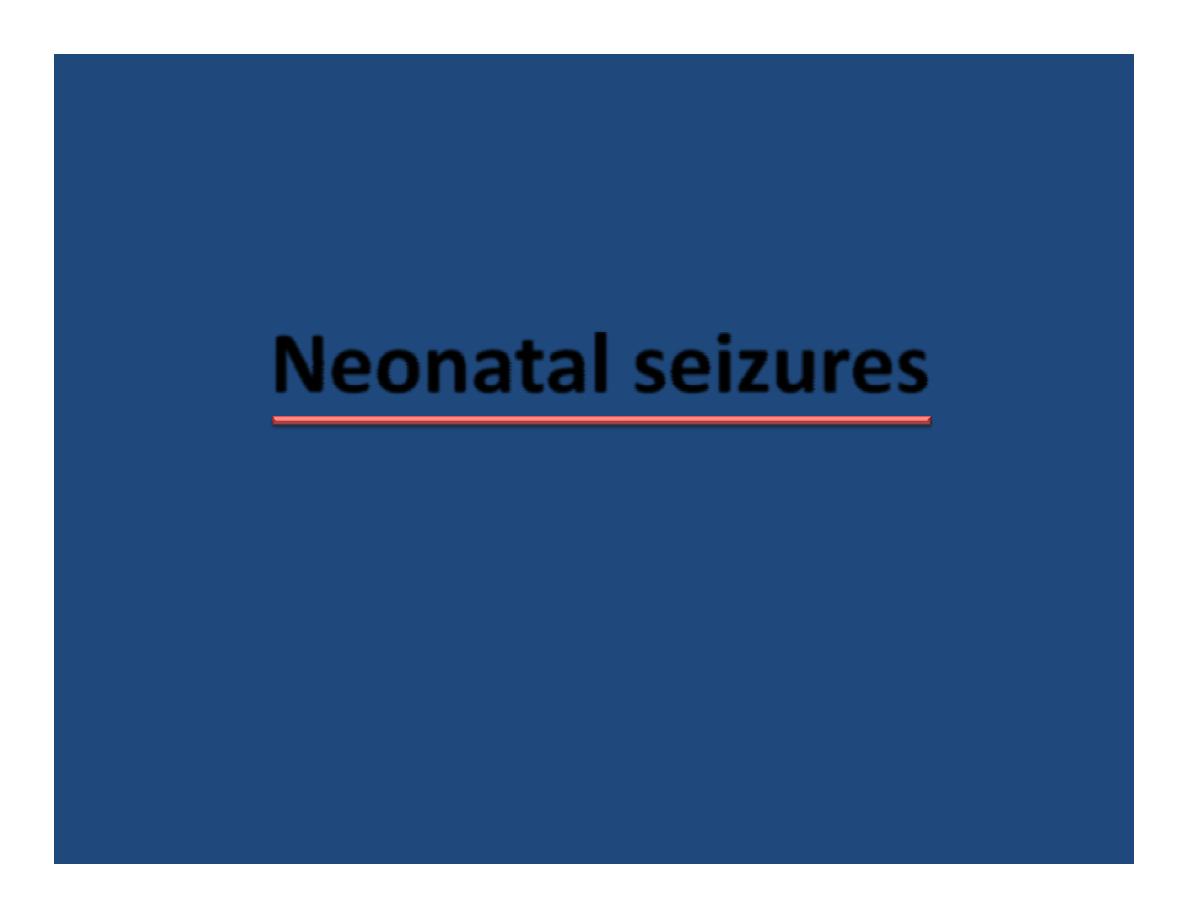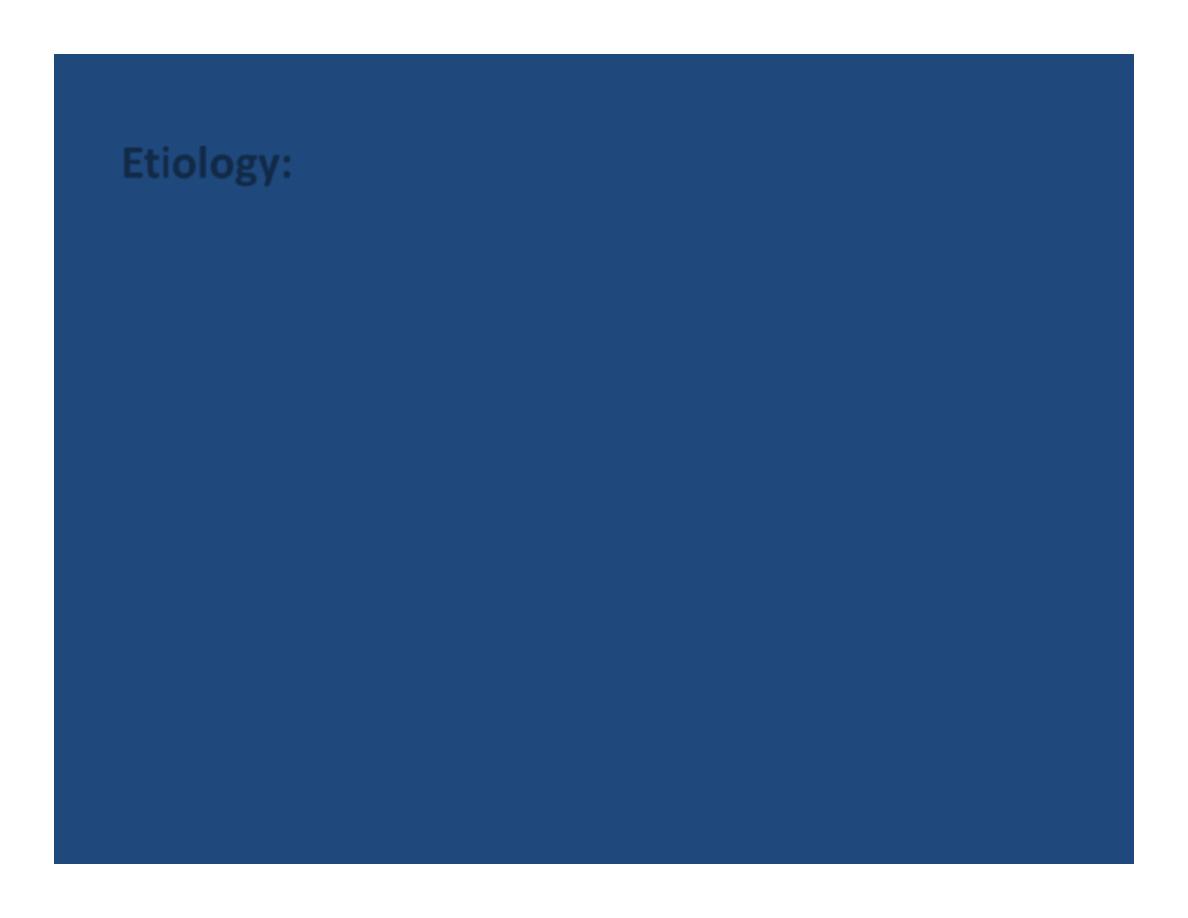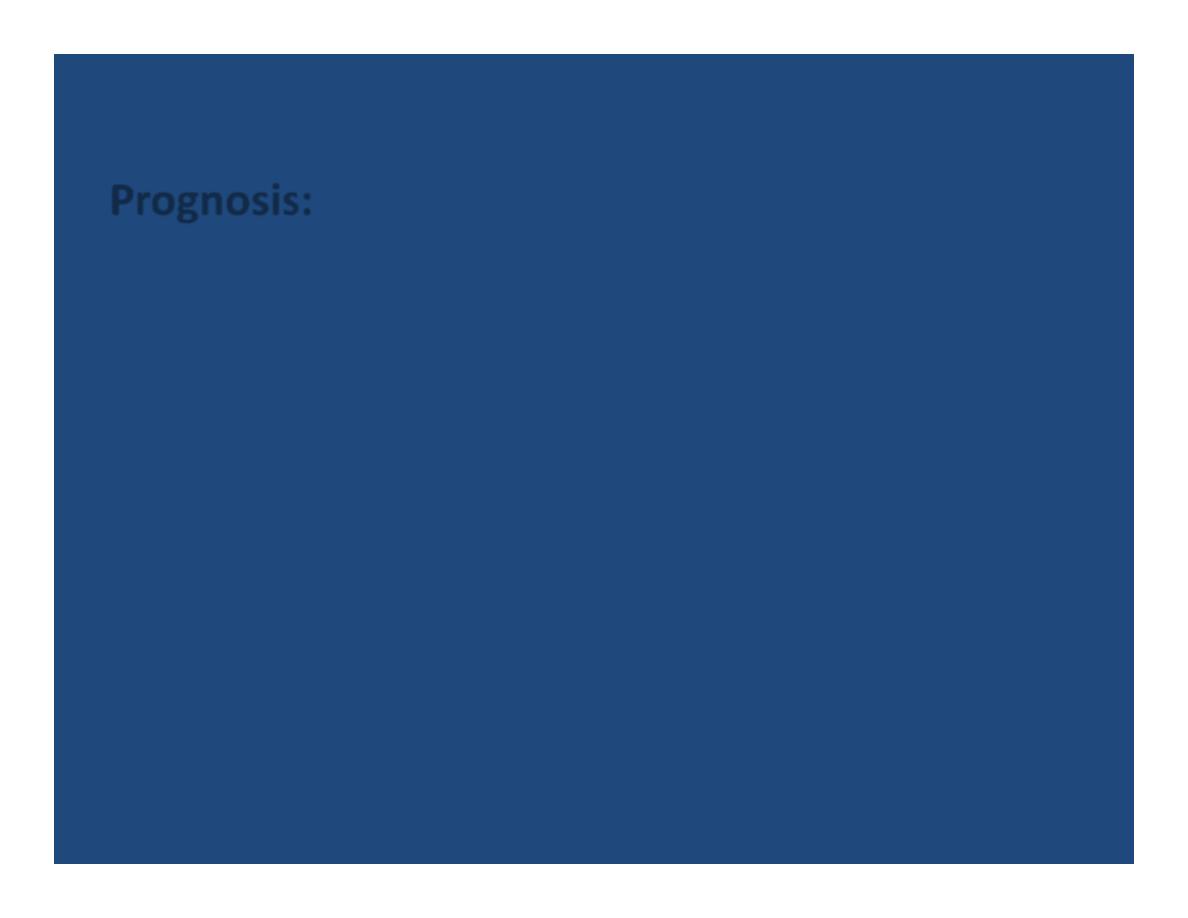
Neonatal seizures
P R O F E S S O R A B D E L G H A N I A L R A W I
©
2
0
0
9

Neonatal seizure are different from those in the child or adult
because generalized tonic‐clonic convulsions tend not to occur
during the 1
st
month of life because:
Arborization of axons.
Dendritic processes.
Myelination is incomplete.
Neonates tend to have fragmentary and focal appearing seizure that
migrates from one area of the body to another.
Friday, February 27, 2009
2
Neonatal Seizures

Etiology:
Hypoxic‐ischemic encephalopathy (in the 1
st
24 hours).
Infection.
IVH (Intraventricular hemorrhage).
Developmental anomalies (in the 1
st
3 days).
Hypoglycemia (in small for gestational age & infants of diabetic
mother).
Hypocalcaemia.
Narcotic withdrawal (e.g. short acting barbiturate, methadone)
Hypo & hypernatremia.
Pyridoxine dependency.
Intoxication of an infant / accidental injection of a local anesthetic
(e.g. Mepivacaine)
Inborn error of metabolism.
Friday, February 27, 2009
3
Neonatal Seizures

Clinical manifestation of neonatal Seizure:
Five categories of seizures are recognized in the newborn in order of decreased
frequency:
1) Subtle Seizure
(motor automatism): is characterized by:
Rhythmic eye movement, chewing motion, unusual eye rowing, swimming or
pedalic movements of arms & legs.
2) Tonic seizure:
generalized or focal, sustained, hyperextension of the upper and
lower extremities or of the trunk & neck.
3,4) Focal & multifocal clonic seizure:
are usually of 1‐3 jerks \ second, and can be
distinguished from tremor or jitteriness (restlessness) (5‐6jerks\sec) by that tremor
can be stopped by restrain or repositioning while seizure cant be stopped by this
restrain.
5) Myoclonic seizure:
brief focal or generalized jerks of the extremities or body that
tend to involve distal muscle group.
Friday, February 27, 2009
4
Neonatal Seizures

Management:
Treat the cause.
Treatment should be according to blood test (Ca, glucose & Mg),
CSF & CT scan
In addition to supportive measures ensure patent airway & give
oxygen.
Stop ongoing convulsion with
Diazepam
0.5 mg/kg.
Phenobarbitone
loading dose 15‐20mg/kg, then 3‐4mg/kg as
maintenance for 3 months.
Phenytoin.
primidone
If we can control the convulsion we stop the anticonvulsant after
3 months.
Friday, February 27, 2009
5
Neonatal Seizures

Prognosis:
As a rule the prognosis depends on the etiology:
1) Infants with perinatal asphyxia or malformation of the brain
have a bad prognosis for survival but not for intellectual
development or freedom from sequelae.
2) In infection only 20‐50% has normal mental development.
3) In primary hypocalcaemia there is an excellent prognosis.
4) In congenital anomalies of the brain they have poor prognosis.
5) Offspring of diabetic mother have good prognosis.
Friday, February 27, 2009
6
Neonatal Seizures

Good prognosis:
Seizure subsides with in 24 hours.
Neurological examination is normal, especially with no abnormal
eye movement.
Return to normal feeding schedule with in 5 days after discharge.
EEG is not persistently abnormal.
Bad prognosis:
Apgar score less than 7 at 5 minutes.
Seizure lasting more than 30 minutes.
Need for prolonged resuscitation.
Friday, February 27, 2009
7
Neonatal Seizures

THANK YOU
powerpoint arranged by: dr. abd el‐ salam dawood
©
2
0
0
9
